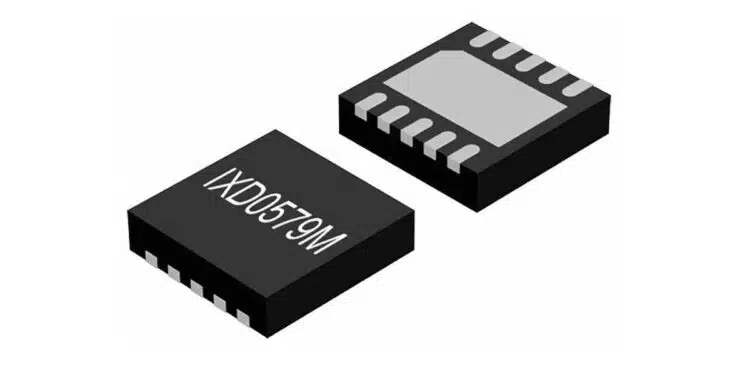Littelfuse IXD0579M high-Side and low-side gate driver offers compact, drop-in solution IC. Integrated bootstrap diode and resistor helps simplify high-speed designs for brushless motors, power tools, and DC-DC converters.
Littelfuse, Inc. a diversified industrial technology manufacturing company empowering a sustainable, connected, and safer world, today announced the release of the IXD0579M high-speed gate driver IC.
The IXD0579M simplifies board design, saves space, and offers a reliable, multiple-source alternative for driving N-channel MOSFETs or IGBTs in half-bridge configurations.
Designed to operate across a wide 6.5 V to 18 V supply range, the IXD0579M integrates a bootstrap diode and a series current limit resistor—components typically requiring discrete placement—into a single compact 3×3 mm² TDFN-10 package. This innovative integration reduces BOM count and cost while enabling easier PCB layout.
Key Product Features and Benefits
- High Drive Capability: 1.5 A source and 2.5 A sink output drive current
- Wide Supply Voltage Range: Operates from 6.5 V to 18 V with UVLO protection
- Integrated Bootstrap Circuitry: On-chip bootstrap diode and resistor simplify design
- Logic Level Compatibility: Interfaces directly with TTL and CMOS levels (down to 3.3 V)
- Cross-Conduction Protection: Prevents simultaneous high-side and low-side conduction
- Ultra-Low Standby Current: Less than 1 µA standby mode for energy efficiency
- Thermal Robustness: Operates from −40 °C to +125 °C
“With the IXD0579M, Littelfuse is offering a direct drop-in replacement for popular industry-standard gate driver ICs,” said June Zhang, Product Manager, Integrated Circuits Division at Littelfuse. “This gives customers greater flexibility to secure supply while simplifying their circuit design with an integrated solution.”
The IXD0579M is the first Littelfuse gate driver to feature both an integrated bootstrap diode and current limit resistor, expanding the company’s growing portfolio of power control solutions. As the eleventh high-side/low-side driver released by Littelfuse, it strengthens the company’s position in serving “multiple source” markets that demand performance and supply chain continuity.
Target Markets and Applications
Engineered for high-frequency switching, the IXD0579M is ideal for:
- Brushless DC (BLDC) motor drives
- Battery-powered hand tools
- DC-DC converters and power supplies
- General industrial and electrical equipment
It’s compact footprint and robust performance make it well-suited for space-constrained designs and high-efficiency power stages.
































